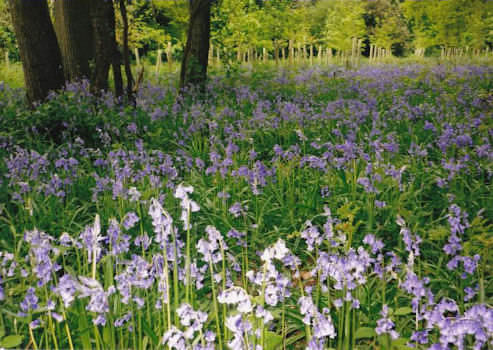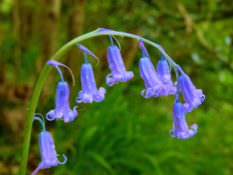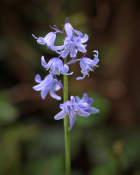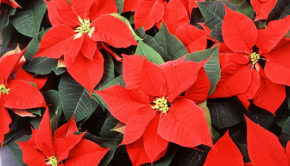Biodiversity Group: Plant of the Month – The Bluebell
The bluebell is common throughout England and Ireland, but is now rare in the rest of Europe and completely absent in the rest of the world. It is a member of the lily family. Its shoots emerge in January, it flowers in April and May and by June it has disappeared for another year. Because it does most of its growing and flowering early in the year, before the leaves on the trees open, it has plenty of light and so is able to replenish nutrients stored in its bulb. Its pollen and nectar rich flowers are also an important early food source for bumblebees, hover flies and butterflies. Our native bluebell, however, is under threat from the more aggressive Spanish variety which was introduced to English gardens nearly 300 years ago. This is easier to grow, less choosy about its habitat and can rapidly meld with its host and change its biological make-up. Increasingly it is spreading from gardens into the wild and into the preferred habitat of the English bluebell – the woodland areas. The English bluebell is much slower growing than its relative taking 5 years from the seed stage to flower and even then is in no hurry to spread. One study discovered the flower extends its range by only 50m in 35 years. Because of this slow spread they are considered an indicator of an ancient woodland site (one that has been in existence since before 1600 and may link back to the wildwood that grew across Britain after the last Ice Age) whether there are trees still there or not. This April and May look out for the bluebells we planted under the trees by the Sports Field main entrance and visit one of our local ‘bluebell woods’!
Know your Bluebell!
Did You Know?
• The bluebell is a symbol of constancy and is probably the origin of the ‘ …. something blue ….’ that a bride should wear on her wedding day.
• Folk myth has it that bluebells ring to call fairies to meetings.
• Bluebell glue was used to attach feathers to arrows in the Bronze Age and by bookbinders in the
Middle Ages.
• It is estimated that the UK has half the world’s population in wild bluebells.
• Bluebell plants are poisonous. The chemical that makes them poisonous was used in alchemy and is being researched by modern day scientists for medical use.
• It is illegal to uproot any wild plant without the landowner/occupier’s permission and since 1998 it has been illegal to uproot or pick for sale wild bluebells.




